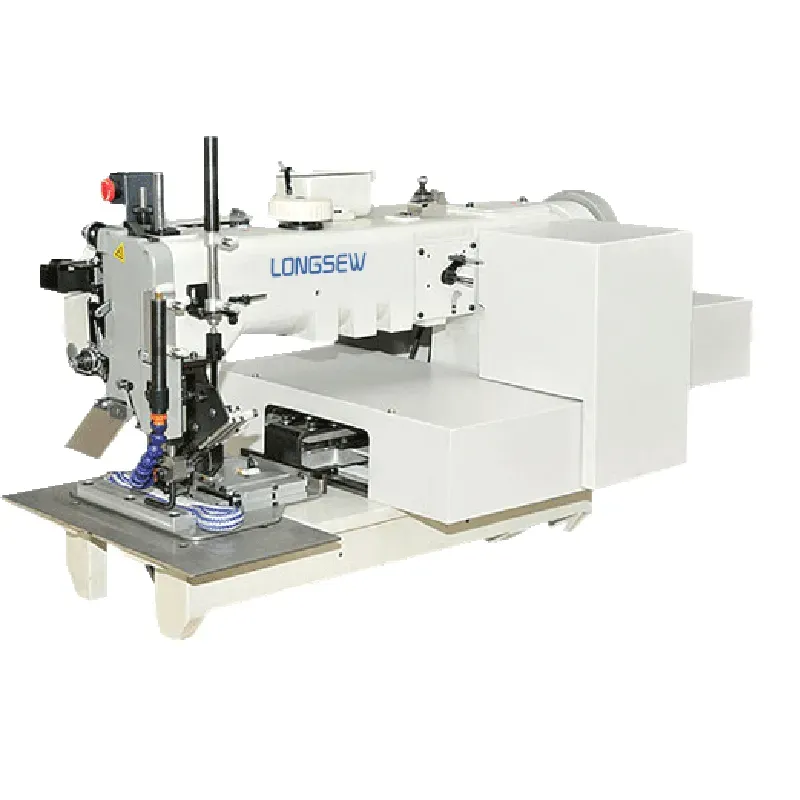What is a Lockstitch Sewing Machine? | A Comprehensive Guide
Understanding the Lockstitch Sewing Machine
The lockstitch sewing machine is a fundamental tool in the textile and garment industry, known for its efficiency and versatility. The operation of this machine is rooted in a simple yet ingenious mechanism that creates a locked stitch, providing durability and strength to sewn fabrics.
Understanding the Lockstitch Sewing Machine
One of the primary advantages of the lockstitch sewing machine is its ability to sew a wide range of fabrics, from lightweight materials like silk to heavier textiles like denim. This flexibility makes it an invaluable asset in both industrial and domestic sewing applications. Additionally, the lockstitch is known for producing a neat and tidy appearance on the fabric's face, while the reverse side has a series of small, even knots, resulting in a professional finish.
what is the lockstitch sewing machine

Lockstitch machines come in various forms, including manual, electronic, and computerized versions. Manual machines require the operator to control the stitching process, while electronic machines offer features like automatic needle positioning and thread tension adjustments. The most advanced versions, computerized lockstitch machines, provide additional functions such as programmable stitch patterns and automatic thread cutting. These advancements have transformed the way garments are produced, allowing for greater efficiency and creativity.
In garment manufacturing, the lockstitch sewing machine is often used for seaming, hemming, and topstitching. Its reliability and speed make it suitable for high-volume production environments. However, it is essential to note that while the lockstitch is incredibly strong, it may not be the best choice for all applications. For instance, when sewing stretchy fabrics or creating seams that require flexibility, overlock or coverstitch machines may be more appropriate.
Maintaining a lockstitch sewing machine is crucial to ensure its longevity and performance. Regular cleaning, oiling, and timely replacement of worn parts can help prevent issues such as thread tension problems or skipped stitches. Operators should also be trained in the proper threading techniques to avoid jams and to achieve the best stitch quality.
In summary, the lockstitch sewing machine is an essential tool in the world of sewing, providing strength and versatility for various fabric types. Its unique mechanism, comprising two interlocking threads, produces a secure and aesthetically pleasing stitch, while advancements in technology continue to enhance its capabilities. Whether for home sewing or industrial applications, understanding the functionality and maintenance of this machine is key to achieving high-quality results in textile production. As technology evolves, the lockstitch remains a staple in the sewing industry, reinforcing its relevance and importance for years to come.
-
Leather Sewing Machine: The Industrial Standard for Tough MaterialsNewsJul.18,2025
-
Sail Making Machine: Heavy-Duty Stitching for Industrial and Marine NeedsNewsJul.18,2025
-
Sling Sewing Machine: The Backbone of Heavy-Duty FabricationNewsJul.18,2025
-
Leather Sewing Machine: Precision for Heavy-Duty StitchingNewsJul.18,2025
-
Big Bag Sewing Machine: Powering the Future of Bulk PackagingNewsJul.18,2025
-
FIBC Sewing Machine: Essential Equipment for Bulk Bag ProductionNewsJul.18,2025
-
Heavy Duty Leather Sewing Machine: A Must-Have for Professional LeatherworkNewsMay.28,2025





























